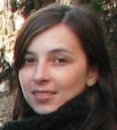Tutorials
(tutorials will be given in portuguese)Tutorial 1
Automatic Speech Recognition: from the beginning to Portuguese Language
This tutorial will provide an overview of the field of automatic speech recognition (ASR). First, some background on speech production/perception and signal representation is going to be reviewed. Then, the speech recognition problem is going to be formulated based on the pattern recognition theory. Some algorithms for pattern classification, acoustic modeling, language modeling and current techniques for improving speech recognition performance are going to be presented. This tutorial will also give a historical review of the efforts in developing ASR systems for the Portuguese Language (and its challenges). The state-of-the-art in ASR for Portuguese and English are going to be discussed. We are going to introduce some of the tools used to develop speech recognition systems (some experiments with the toolkits are going to be performed during the workshop). Finally, some campaigns to evaluate and assess speech recognition systems (NIST, ELRA, Blizzard, and so on) are going to be presented.
Official material: Adami, A. G. (2010) Automatic Speech Recognition: From the Beginning to the Portuguese Language (PDF).
Main reference material:
Huang, Acero, and Hon. Spoken Language Processing.
Upper Saddle River, NJ: Prentice-Hall, 2001.
Rabiner & Juang. Fundamentals of Speech Recognition.
Upper Saddle River, NJ: Prentice-Hall, 1993.
Additional material:
Jelinek. Statistical Methods for Speech Recognition.
Cambridge, MA: MIT Press, 1998.
 André Gustavo Adami has received his bachelor degree in Computer Science by the University of Caxias do Sul (UCS) in 1994, masters degree in Computer Science by the Federal University of Rio Grande do Sul (UFRGS) in 1997, and PhD in Electrical Engineering at the Oregon Health and Science University in 2004. Currently, he is a professor at the Informatics Department of the University of Caxias do Sul. He is experienced in the areas of Computer Science/Electrical Engineering, with emphasis on Speech Processing and Pervasive Computing, working mainly with the following subjects: speaker recognition, voice recognition, digital signal processing, artificial neural networks, human-computer interaction and pervasive computing applied to human health.
André Gustavo Adami has received his bachelor degree in Computer Science by the University of Caxias do Sul (UCS) in 1994, masters degree in Computer Science by the Federal University of Rio Grande do Sul (UFRGS) in 1997, and PhD in Electrical Engineering at the Oregon Health and Science University in 2004. Currently, he is a professor at the Informatics Department of the University of Caxias do Sul. He is experienced in the areas of Computer Science/Electrical Engineering, with emphasis on Speech Processing and Pervasive Computing, working mainly with the following subjects: speaker recognition, voice recognition, digital signal processing, artificial neural networks, human-computer interaction and pervasive computing applied to human health.
Tutorial 2
Fundamental and New Approaches to Statistical Machine Translation
In this tutorial I will cover the foundations of phrase-based Statistical Machine Translation (SMT), from word-alignment and phrase extraction to parameter estimation, decoding and evaluation. I will discuss the state-of-the-art performance, commercial perspectives and challenges for SMT. I will also introduce more recent developments in SMT, including syntax-based SMT and alternative methods for alignment, phrase extraction and decoding.
As we progress throughout the tutorial, if resources are available, I will show how to build a toy translation system using Moses (http://www.statmt.org/moses/).
Official material: Specia, L. (2010) Fundamental and New Approaches to Statistical Machine Translation (PDF).
Main reference material: Lopez, A. (2008) Statistical machine translation
ACM Computing Surveys: http://portal.acm.org/citation.cfm?id=1380586
Additional material:
Kevin Knight.A Statistical MT Tutorial Workbook, 1999
Manning, C. and Schutze, H.Foundations of Statistical NLP - Chapter 13.
The MIT Press, Cambridge MA, 1999.
Moses tutorial
 Lucia Specia has received a PhD in Computer Science from the University of Sao Paulo (USP-Sao Carlos, Brazil) in 2007. She was a
postdoctoral research engineer at Xerox Research Centre Europe (Grenoble, France) from 01/2008 to 06/2009 and joined the University
of Wolverhampton as a senior lecturer just after that. Her research interests include Machine Translation, NLP Evaluation, Text
Simplification, Word Sense Disambiguation and Plagiarism Detection.
Lucia Specia has received a PhD in Computer Science from the University of Sao Paulo (USP-Sao Carlos, Brazil) in 2007. She was a
postdoctoral research engineer at Xerox Research Centre Europe (Grenoble, France) from 01/2008 to 06/2009 and joined the University
of Wolverhampton as a senior lecturer just after that. Her research interests include Machine Translation, NLP Evaluation, Text
Simplification, Word Sense Disambiguation and Plagiarism Detection.